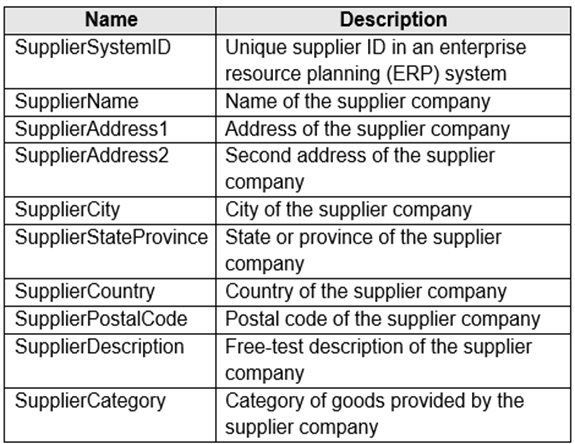

You are designing a slowly changing dimension (SCD) for supplier data in an Azure Synapse Analytics dedicated SQL pool.
You plan to keep a record of changes to the available fields.
The supplier data contains the following columns.
Which three additional columns should you add to the data to create a Type 2 SCD? Each correct answer presents part of the solution.
NOTE: Each correct selection is worth one point.
ItHYMeRIsh
Highly Voted 3 years, 6 months agoBouhdy
10 months agoAchu24
2 years, 6 months agoCHOPIN
Highly Voted 3 years, 5 months agodev2dev
3 years, 5 months agoassU2
3 years, 5 months agopractia
11 months, 2 weeks agoMad_001
3 years, 4 months agoOnobhas01
3 years, 3 months agomuove
2 years, 11 months agoSHENOOOO
2 years, 5 months agoIMadnan
Most Recent 4 months, 2 weeks agoThe_OTC
6 months, 1 week agoEmnCours
7 months, 1 week agojarobdataeng
10 months agoiceberge
11 months, 2 weeks agoOkkier
12 months agosergio_eduardo
1 year, 1 month agocodedev91
1 year, 2 months agoDusica
1 year, 2 months agoolayvo
1 year, 2 months agodgerok
1 year, 3 months agoulrom
1 year, 3 months agoj888
1 year, 4 months agorocky48
1 year, 5 months agoblazy001
1 year, 7 months ago